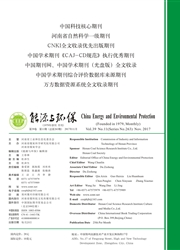

 中文摘要:
中文摘要:
针对某引江河二线船闸工程,基于ABAQUS建立了船闸地连墙板桩结构三维有限元整体分析模型,开发了相应的FRIC子程序模拟地连墙和土体的相互作用;分11级连续模拟了船闸施工期5个不同典型阶段的锚碇桩、地连墙的内力、变形以及锚杆的内力变化,并将有关数值模拟结果与现场实测结果进行了对比,二者取得了较好的一致;对锚杆的布置高程和闸室土体的开挖方式进行了优化研究。研究表明,所建立的整体分析模型能够准确地预测施工期不同阶段锚碇桩、地连墙的变形以及锚杆的内力变化情况;闸室土体的开挖过程对地连墙和锚碇桩的变位影响较大;锚杆布置在泥面到闸顶高度的2/3位置时墙体变形和内力最小。
 英文摘要:
英文摘要:
The 3D finite element model of high sheet-pile structures of the chamber with diaphragm retaining walls for the certain sec- ond-line ship lock engineering was established. The FRIC subroutines was developed to simulate the interaction between wall and soil. The model was used to predict the deformation behavior of anchor piles, internal forces and deformation of diaphragm retaining walls, as well as the internal force state of bars at five different stages in the construction period in which construction process is simplified into 11-levels loading. Numerical results are compared with the measured data to illustrate the good accuracy of the model. The elevation of anchors and excavation method of chamber were also studied. Results show that the established 3D finite element model of sheet-pile structures with diaphragm retaining walls can accurately predict the deformation of the anchor piles and diaphragm retaining walls, as well as the internal force of bars in different stages during the construction period ;the excavation process of the chamber have a great in- fluence on the deformation of the anchor piles and diaphragm retaining walls ; anchors should be designed at a depth of approximately 2/ 3 of the wall height below the top of wall;if soil in the chamber was excavated at first,the deformation of the anchor piles and diaphragm retaining walls as well as the internal force of bars can be improved effectively.
 同期刊论文项目
同期刊论文项目
 同项目期刊论文
同项目期刊论文
 期刊信息
期刊信息
